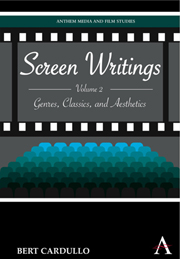Book contents
- Frontmatter
- Contents
- List of Illustrations
- Introduction: The Film of Value
- Part I Film Genres, Film Classics, and Film Aesthetics
- Interlude
- 5 Switching Genres, or Playing to the Camera, Playing to the House: Stage vs. Screen Acting
- 6 On the Road Again: The Road Film and the Two Coppolas
- 7 The Coming-of-Age Film à la Fellini: The Case of I vitelloni
- Part II Classification, Re-classification, and Assessment
- Bibliography of Related Criticism
- Index
- Plate section
7 - The Coming-of-Age Film à la Fellini: The Case of I vitelloni
from Interlude
Published online by Cambridge University Press: 05 March 2012
- Frontmatter
- Contents
- List of Illustrations
- Introduction: The Film of Value
- Part I Film Genres, Film Classics, and Film Aesthetics
- Interlude
- 5 Switching Genres, or Playing to the Camera, Playing to the House: Stage vs. Screen Acting
- 6 On the Road Again: The Road Film and the Two Coppolas
- 7 The Coming-of-Age Film à la Fellini: The Case of I vitelloni
- Part II Classification, Re-classification, and Assessment
- Bibliography of Related Criticism
- Index
- Plate section
Summary
In the most impressive phase of his career (from Variety Lights [1950] through 8½ [1963]), Federico Fellini (1920–1993) was, above all, an observer, constructing his films through juxtaposition: that is, through setting details of reconstructed reality side-by-side to point up a common denominator, or (more often) to expose the ironic relationship between unlike things. This method of reconstruction is the one associated with Italian neorealism, which Fellini himself defined in a 1971 interview with Charles Thomas Samuels as “the opposite of manufactured effects, of the laws of dramaturgy, spectacle, even of cinematography” – in other words, the presentation of the world in as natural a manner as possible, without arranging things in order to create plots or entertainments.
What distinguishes Fellini from the neorealists, however, is an insistence on the primary force of human imagination. His characters aren't solely motivated by externals – the theft of a bicycle, social indifference, child and elderly abandonment or neglect – as Vittorio De Sica's were. Nor, like Ermanno Olmi, does Fellini invert neorealism by studying only the human accommodation to such external circumstances. Instead, he denies the pure externality of events, choosing instead to show that reality and imagination interpenetrate. Hence Fellini's characters never face a fact without dressing it up: if, as in I vitelloni (1953), they are in an empty piazza during the small hours of the night, they actively deny the implication that all human activities must pause; if, as in The Nights of Cabiria (1957), they are stepping in place on what amounts to a treadmill, they are nonetheless always on parade, decked out and boisterous.
- Type
- Chapter
- Information
- Screen WritingsGenres, Classics, and Aesthetics, pp. 103 - 112Publisher: Anthem PressPrint publication year: 2010



